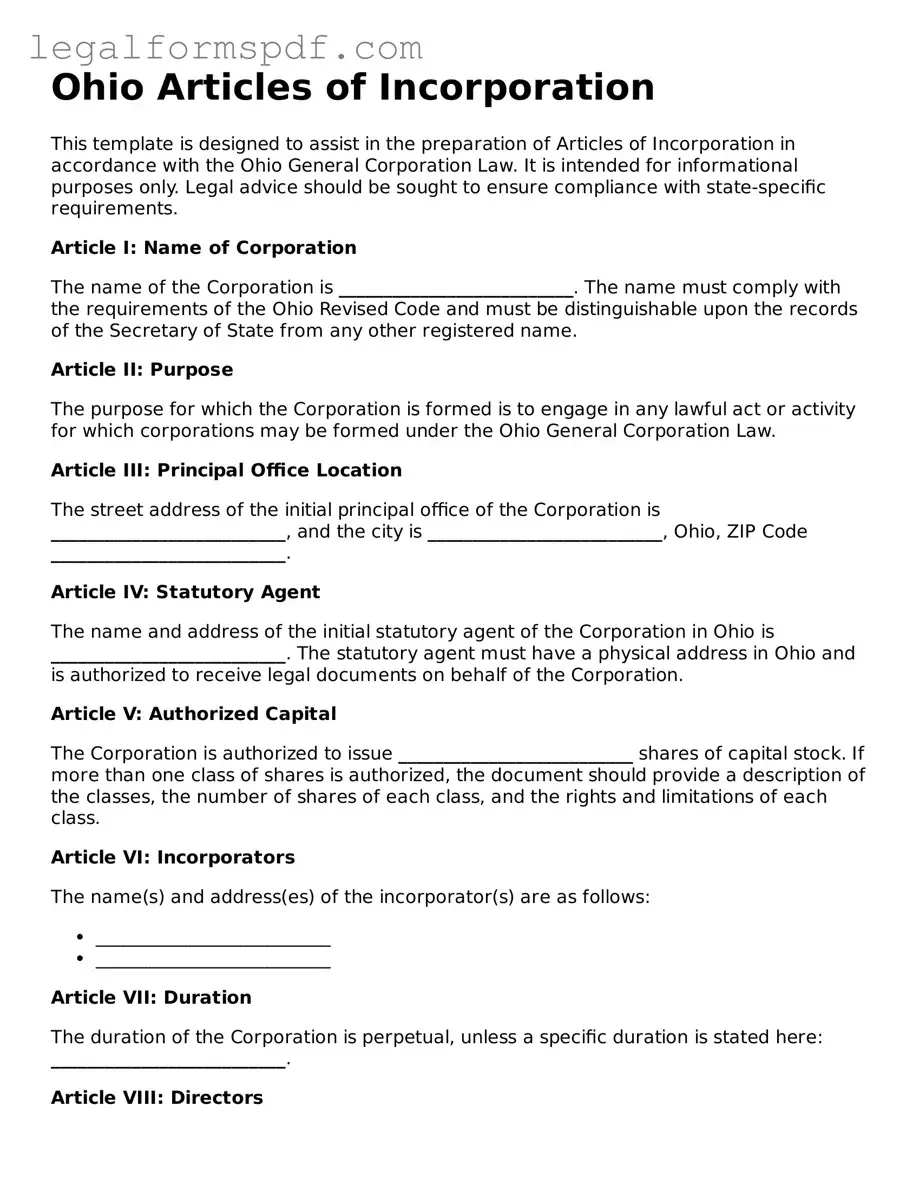Ohio Articles of Incorporation
This template is designed to assist in the preparation of Articles of Incorporation in accordance with the Ohio General Corporation Law. It is intended for informational purposes only. Legal advice should be sought to ensure compliance with state-specific requirements.
Article I: Name of Corporation
The name of the Corporation is __________________________. The name must comply with the requirements of the Ohio Revised Code and must be distinguishable upon the records of the Secretary of State from any other registered name.
Article II: Purpose
The purpose for which the Corporation is formed is to engage in any lawful act or activity for which corporations may be formed under the Ohio General Corporation Law.
Article III: Principal Office Location
The street address of the initial principal office of the Corporation is __________________________, and the city is __________________________, Ohio, ZIP Code __________________________.
Article IV: Statutory Agent
The name and address of the initial statutory agent of the Corporation in Ohio is __________________________. The statutory agent must have a physical address in Ohio and is authorized to receive legal documents on behalf of the Corporation.
Article V: Authorized Capital
The Corporation is authorized to issue __________________________ shares of capital stock. If more than one class of shares is authorized, the document should provide a description of the classes, the number of shares of each class, and the rights and limitations of each class.
Article VI: Incorporators
The name(s) and address(es) of the incorporator(s) are as follows:
- __________________________
- __________________________
Article VII: Duration
The duration of the Corporation is perpetual, unless a specific duration is stated here: __________________________.
Article VIII: Directors
The number of directors constituting the initial Board of Directors of the Corporation is __________________________, and their names and addresses are as follows:
- __________________________
- __________________________
- __________________________
Article IX: Indemnification
The Corporation shall indemnify a director, officer, employee, or agent of the Corporation to the fullest extent permitted by the Ohio General Corporation Law.
Article X: Bylaws
The initial bylaws of the Corporation shall be adopted by the Board of Directors at their first meeting. The power to alter, amend, or repeal the bylaws or adopt new bylaws shall be vested in the Board of Directors unless otherwise provided in the Articles of Incorporation or the laws of Ohio.
Article XI: Adoption of Articles
The undersigned incorporator(s) hereby adopt these Articles of Incorporation on this ____ day of ____________, 20____.
__________________________
Name of Incorporator
__________________________
Signature of Incorporator
This template serves as a guide to ensure the comprehensive inclusion of information necessary for filing Articles of Incorporation in Ohio. For legal advice or more detailed information regarding the process, consulting with a legal professional is recommended.
